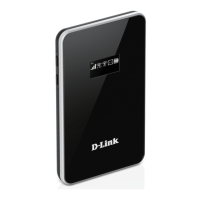8D-Link DWR-933 User Manual
Section 2 - Installation
Wireless Installation Considerations
The DWR-933 can be accessed using a wireless connection from anywhere within the operating range of its wireless network. Keep in mind that the
quantity, thickness, and location of walls, ceilings, or other objects that the wireless signals must pass through may adversely aect wireless signals.
Ranges vary depending on the types of materials and background RF (Radio Frequency) noise in your home or oce. The key to maximizing the
wireless range is to follow these basic guidelines:
1. Minimize the number of walls and ceilings between the router and other network devices. Each wall or ceiling can reduce your adapter’s range
from 1 to 30 meters (3 to 90 feet).
2. Be aware of the direct line between network devices. A wall that is 0.5 meters (1.5 feet thick) appears to be almost 1 meter (3 feet) thick at a
45-degree angle. At a 2-degree angle it appears over 14 meters (42 feet) thick. Position devices so that the signal will travel straight through a
wall or ceiling (instead of at an angle) for better reception.
3. Try to position access points, wireless routers, and computers so that the signal passes through open doorways. Materials such as glass, metal,
brick, insulation, concrete, and water can aect wireless performance. Large objects such as sh tanks, mirrors, le cabinets, metal doors, and
aluminum studs may also have a negative eect on range.
4. If you are using a 2.4 GHz cordless phone, make sure that the 2.4 GHz phone base is as far away from your wireless device as possible. The base
transmits a signal even when the phone is not in use. In some cases, cordless phones, X-10 wireless devices, and electronic equipment such as
ceiling fans, uorescent lights, and home security systems may dramatically degrade wireless connectivity.

